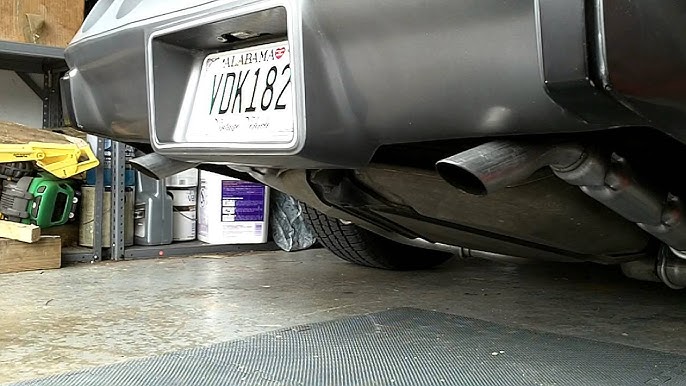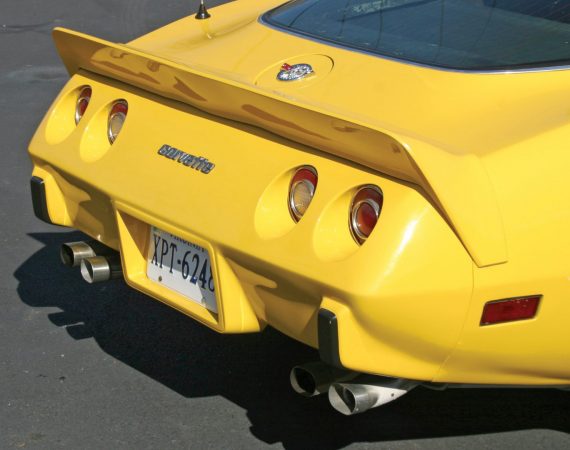Is your 1978 Corvette in need of an exhaust upgrade? You’re not alone. As a proud owner of this classic car, I know just how important it is to maintain and improve its performance while preserving its iconic style. And when it comes to exhaust systems, there are plenty of options out there that claim to enhance your ride’s power and sound. But before you make any decisions, let me share with you the key factors you need to consider when upgrading your 1978 Corvette’s exhaust system.
In this article, we’ll delve into everything from the different types of exhaust systems available for the 1978 Corvette, their benefits and drawbacks, and what kind of performance gains you can expect. I’ve spent years researching and experimenting with various exhaust setups on my own ’78 Vette so rest assured, I have all the expertise and experience needed to guide you through this process. So buckle up and get ready to learn everything you need to know about upgrading your beloved Corvette’s exhaust system!
So, 1978 corvette exhaust system?
If you’re considering upgrading the exhaust system on your 1978 Corvette, there are a few things you should know before making any changes. First and foremost, it’s important to understand that the exhaust system plays a crucial role in the overall performance of your vehicle. It not only affects the sound and appearance of your car, but also impacts its power and fuel efficiency.
Before diving into any upgrades, it’s essential to assess what type of driving experience you want from your Corvette. Do you want a louder and more aggressive sound? Or are you looking for improved horsepower and torque? This will help determine which type of exhaust system is best suited for your needs.
Next, consider the materials used in aftermarket exhaust systems. Stainless steel is typically seen as the superior choice due to its durability and resistance to corrosion. However, if budget is a concern, aluminized steel can be a more affordable option while still providing decent performance.
It’s also worth noting that changing out just one component of the exhaust system may not yield significant results. Upgrading all components – including headers, pipes, mufflers – as part of a full cat-back or axle-back system will likely provide better overall gains.
Another important factor to keep in mind when upgrading is emissions regulations. Depending on where you live, certain modifications may not be legal or could potentially void your warranty. Be sure to research local laws and consult with professionals before making any changes.
Lastly, make sure to choose an experienced mechanic or shop for installation. Properly installing an upgraded exhaust system requires knowledge and skill to ensure optimal performance without causing damage to other parts of your vehicle.
In summary, upgrading the exhaust system on your 1978 Corvette can improve both its aesthetics and performance; however,it’s crucial to carefully consider factors such as desired driving experience,budget,and local regulations before making any changes.Finding an experienced professional for installation will also play a key role in achieving successful results.
Understanding the Components of Your 1978 Corvette Exhaust System
When it comes to the 1978 Corvette, the exhaust system plays a crucial role in both performance and sound. This system comprises several key components that work together seamlessly. At its heart is the exhaust manifold, which collects gases from the engine cylinders and directs them into the pipes. Following this are the catalytic converters, designed to reduce harmful emissions while also improving efficiency. The next part of this journey is often a set of mufflers, strategically placed to manage noise levels without sacrificing power. These elements combine not just for function but also contribute significantly to that unmistakable throaty growl typical of classic Corvettes.
Equally important are features like tailpipes and any connecting hardware, which ensure smooth gas flow out of your vehicle. Regularly checking these parts can prevent rust or leaks that may affect performance over time. Should you decide on modifications, options abound—from high-flow catalytic converters to aftermarket headers—each choice can enhance horsepower or alter sound characteristics in exciting ways! Ultimately, understanding each component allows enthusiasts to appreciate their ride even more while maintaining its iconic status on roads today.
Whether you’re cruising down a highway or parked at a show, knowing how your exhaust system operates enriches your experience as a Corvette owner.
Choosing the Right Type of Exhaust System for Your 1978 Corvette
When it comes to enhancing your 1978 Corvette’s performance and sound, selecting the perfect exhaust system is crucial. This classic vehicle deserves an exhaust setup that not only complements its design but also boosts its power. There are several options available, each offering unique benefits. For instance, dual-exhaust systems are popular for their ability to improve airflow while providing a rich rumble that resonates with enthusiasts. Alternatively, you might consider a performance muffler, which can reduce back pressure and optimize engine efficiency.
In addition to performance considerations, aesthetics play a role in your choice as well. A sleek stainless-steel finish can give your Corvette a polished look while resisting rust over time. When exploring options, remember to think about sound preference too; some may prefer a loud roar that commands attention on the road, while others lean towards a subtle growl for everyday driving. To summarize:
- Performance Boost: Increase horsepower and torque.
- Aesthetic Appeal: Choose materials and styles that enhance the car’s elegance.
- Sound Preference: Decide between aggressive or refined tones.
Each option has something special to offer!

Read also: 2005 corvette steering wheel
Expected Performance Gains from Upgrading Your 1978 Corvette’s Exhaust System
Upgrading the exhaust system of your 1978 Corvette can result in significant performance gains that make driving an exhilarating experience. When you install a high-performance exhaust, you allow the engine to breathe more freely. This means that air flows more efficiently through the pipes, enhancing the overall power output. The roar of a well-tuned exhaust isn’t just music to the ears; it’s also a sign that your engine is working better than before. With improved airflow, you’ll likely notice an increase in horsepower and torque, which can lead to quicker acceleration and smoother operation.
Moreover, modern exhaust systems often incorporate advanced materials and technology designed for durability and weight reduction. By replacing factory components with lighter options made from stainless steel or titanium, not only does your car shed unnecessary pounds but it can also improve handling dynamics. The sleek design of aftermarket systems can reduce unwanted back pressure while providing a rich sound that makes every drive memorable.
In addition to these mechanical benefits, many enthusiasts appreciate how an upgraded system enhances their vehicle’s aesthetic appeal—those shiny tips glinting under sunlight add character to any classic ride!
Making an Informed Decision on Your 1978 Corvette Exhaust Upgrade
Upgrading the exhaust system on your 1978 Corvette can truly transform both its performance and sound. When contemplating this change, it’s important to assess what you want from the upgrade. Are you aiming for a deeper, more aggressive growl that turns heads as you cruise down the street? Or perhaps you’re looking to improve airflow for better horsepower and torque? Research is key. Dive into various options like cat-back systems, headers, or even turbo kits. Each has its own benefits; for instance, a cat-back system typically enhances sound without compromising comfort during long drives.
Next, consider your budget and installation preferences. Some exhaust upgrades can be handled in a backyard garage with basic tools while others may require professional help due to complexity. Look into reputable brands that offer warranties—this way, you’re covered if something goes wrong after installation. Additionally, take time to read reviews from fellow Corvette enthusiasts on forums or social media groups; their experiences can provide invaluable insights into how different setups perform over time.
Ultimately, an informed decision ensures that your investment not only elevates your driving experience but maintains the classic charm of your beloved C3 Corvette.
You may also like: c7 corvette grill
Read also: cam for c6 corvette
Read also: el c7 cam
